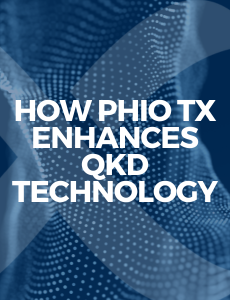The 2025 Nobel Prize in Physics, awarded to John Clarke, Michel Devoret, and John Martinis for pioneering work on quantum effects in macroscopic circuits, represents more than scientific achievement—it marks a strategic inflection point for enterprise cybersecurity. Their foundational research enabled the superconducting quantum computers now advancing rapidly at Google, IBM, and other technology leaders, creating an asymmetric risk that demands immediate C-suite attention.
The Business Risk
Today’s encryption infrastructure protects everything from financial transactions to intellectual property faces obsolescence. RSA and elliptic curve cryptography, industry standards for decades, depend on mathematical complexity that quantum computers will render trivial. The timeline is compressing as cryptographically relevant quantum systems, once thought to be over 10 years away, is now forecasted to be less than 5 years.
More concerning is the “Harvest Now, Decrypt Later” threat. Nation-state actors are systematically capturing encrypted data today, banking on future quantum capabilities to unlock it. For organizations handling sensitive information with multi-decade confidentiality requirements such as defense, pharmaceutical R&D, and long-term financial strategies, the exposure is already material. Your encrypted data may be secure today but vulnerable tomorrow.
Strategic Imperatives
The transition to post-quantum cryptography is a business continuity issue, not merely a technical upgrade. NIST’s August 2024 release of finalized quantum-resistant standards provides the roadmap, but implementation requires years, not months. Industry advisories recommend discontinuing traditional asymmetric cryptography by 2030—a timeframe that necessitates immediate planning.
Leading organizations are already moving. Technology giants are implementing quantum-safe protocols across their infrastructure. Government agencies have established hard deadlines. The competitive landscape will increasingly favor enterprises demonstrating cryptographic resilience.
Final Thoughts
The common industry recommendation is to begin by conducting cryptographic inventory assessments to identify vulnerable systems and data assets. However, it should be noted there are solutions available today to harden existing network infrastructure which represents significant progress in PQC migration journey.
The Nobel Prize reminds us that transformative technology creates both opportunity and obligation. Ensuring your organization’s security architecture evolves accordingly is now a fiduciary responsibility. Talk to one of our experts today to help with your strategy.
Contact Us

